Leaderboard
Popular Content
Showing content with the highest reputation on 12/04/2022 in all areas
-
We have always struggled with what to do with our shoes other than a pile at the bottom of the closet. After much thought, we came up with the idea of a rack suspended below the lower closet shelf. This is two shelves made of 1/4" MDF suspended on threaded rod, with 1/2" PVC concealing the rod and providing some stability. It is set back just far enough to allow the clothes hangers in front to move freely. As a bonus, the offset from the black vent pipe leaves just enough room to snugly tuck in the extra piece of hypervent. Looking forward to road testing it in the coming year!14 points
-
Interesting shoe rack! Necessity is the mother of invention and now making your Ollie yours.👍🏻 We typically don’t travel with a lot of footwear (usually 3 pair ea) for the two of us. We carry a pair of Merrell walking shoes, reliable crocks, and our old hiking boots. These are kept outside of our Oliver usually in the bed of our truck in a small plastic tub. We just make it a practice to not wear or store our shoes inside our Oliver. Germaphobes? 😅 hahaha…well yes I guess you could say that. Some CGs can be pretty nasty places to walk around, not to mention the some of the bath houses. We don’t wear shoes inside our brick and motor home so we don’t in our Ollie. Our quick slip on pair of pretty much weather proof campsite crocks are usually stored under the steps for quick and easy access. Just different view point on shoe storage or as it’s been said not one size fits all. 😊6 points
-
4 points
-
Nope - Remember that the "ball" is in one piece connected to a "shaft" that extends from the ball down through the "body" of the Andersen and comes out at the bottom - this is where you then attach the "whale tail". When the trailer is attached to the Andersen there are two points of contact - 1 - the ball and -2- the whale tail. When the shaft "rotates" inside the body it creates friction and the "brake" material inside that housing expands due to the heat. This, in turn, applies more and more pressure on the shaft as friction is increased due to these rotational forces inside this body. When "sway" occurs - never have I heard of this happening with an Oliver - the rotational forces are greater and greater as the sway gets worse. The friction and thus the braking material continues to expand until there is enough force applied to the shaft to slow the rate of sway/rotation. This is how the Andersen controls sway - which basically we Ollie owners do not really need. Greasing the ball will tend to allow the ball - hitch connection to move more easily against each other than intended thereby negating the "benefit" of having this connection force help to move the shaft inside the housing. Yes, you still have the whale tail that will rotate that shaft but you are then relying on the whale tail's connection to the trailer via the chains to slow the rotation while when the ball is "solidly" also connected to the ball and therefore the shaft and therefore the whale tail you have all things moving (or not moving) at roughly the same speed/force. In older models of the Andersen grease ( and water and dirt and all kinds of stuff) often seeped down into that "brake" material somewhat negating its functionality. But, with the newer designs this old problem has been virtually eliminated. Bill4 points
-
I really like Will's videos, my wife thinks he's a little quirky but I remind her he's an engineer. This is a great video and Battleborn makes a great product. I got two takeaways for those of us that will be using Lithionics batteries. I also really like Lithionics, 100% made in USA. 1. Battleborn "is going to install internal battery heaters in the near future" - Lithionics already has internal heaters. 2. Battleborn recommends if you are connected for a long time, like at your house, to "disconnect the batteries". Lithionics has On/Off switches that make this easy. I believe there are many good choices on the market today and people should get what suits them best. I am happy we are going with Lithionics, Victron and Xantrex and we will make the most of our situation. Information sharing is how we all learn, thanks for posting. Brian3 points
-
That’s what we did, David. Our original AGM’s lasted from 2013 until 2020. We installed three BB 100 amp hour batteries.3 points
-
Today I drove from western NC Virtually due north via I-26 to I-81 to I-77 south of Cleveland. Cheapest regular gas was around $2.69 while the highest price was $3.59. TN and VA generally had the cheapest. Bill2 points
-
I have sent an email to Bulldog and to Anderson, and I have notified Jason at the factory; I am re-posting it here as a heads up and to get input from Anderson owners. I have not seen mention of this particular issue on any forums. IF you are experiencing severe and uneven wear, please degrease the inside of your coupler and the ball, and take pics so we can see if my situation is more than a fluke. This ball has 700 miles on it, with grease: EMAIL SENT TO BULLDOG AND ANDERSON: Hi, I have a new Oliver Legacy Elite II travel trailer, purchased new 05/15/17. It currently has 4100 miles on it. It came from the factory with a 2 inch/ 7000 pound Bulldog coupler bolted to the aluminum tongue. The inside of the socket has two raised areas that are destroying the balls. I first used a 2 inch chrome ball and towed for about 3200 miles as a dead weight. Tongue weight was about 650 pounds. Wear was bad, but tolerable since the ball only costs $10. Now I have an Anderson weight distributing hitch. In just 700 miles, the forward thrust of the chains is VERY SEVERELY wearing the 2 inch/ 10,000 pound Anderson ball where the raised pressure points are in back. This is unacceptable since a replacement ball is $50 plus shipping. https://andersenhitches.com/Products/3382--wd-2-replacement-ball-tapered-10k-gtwr.aspx I have kept the ball and coupler lubed with synthetic grease but it does not appear to help. I need to know if I can get a replacement coupler sent at no charge under warranty, and also a reimbursement for the purchase of a new Anderson ball. Is the wear I am experiencing unusual? I have seen NO mention of this on forum discussions. Also, with a new coupler, can I manually “lap” the ball and socket together by using an old ball and valve grinding compound, to eliminate the high spots before towing? Or is there another way you recommend to prevent the coupler from abusing the new ball? Thanks, John Davies Spokane WA1 point
-
I'm thinking, as this year draws swiftly to a close, a capsule of this year's adventures. We've had an awesome year, with and without our little Elite. We took the hull plaque to Chile/Patagonia and Antarctica, since we couldn't take the trailer. I hope you have had awesome adventures as well. 2022 in ten pix, for us . A pic of our last camp, this week, in wnc, rounds out the year, as we began and ended the year in the beauty of North Carolina.1 point
-
1 point
-
Kirk - I did make the mistake in assuming this was a recent video and didn't check the date but, I have to say, I was just quoting the CEO. It's good yours have heaters, and now that I think about it, they have the little jumper wires that connect to themselves, correct? I remember those from the Airstream batteries. Surprised BB has not added a remote disconnect (On/Off) switch. I know there are many ways to do this. My preference was a BlueSea battery disconnect switch. I am guessing your truck has one? Thanks for the continued discussion. Brian1 point
-
It's a tight fit depth wise, but I was able to size the dimensions to provide a small amount of clearance to the plastic hangers shown in the picture. It could be scaled back a bit if just used for odds and ends, or if someone has smaller feet than my size 13's. I have about 13-14 inches of shelf depth on the left side, and the depth decreases as it follow the contour of the hull around to the right side.1 point
-
1 point
-
Makes sense. Thanks to you and Bill (Topgun2) for the explanations. I infer that, since waxed paper shouldn't seep when friction warms it up, that should be the preferred way to reduce coupler-to-ball friction, yet avoid the seepage issue, even with my 2022 version of the Andersen WD hitch. So, I think I'll try that method.1 point
-
You’re practically in my backyard. We’re 20 miles west of Cleveland, just south of I-90. Regular is $2.91 down the road at Sheetz. $2.81 at Pilot using their free rewards card. ($0.10 off per gallon)1 point
-
I’d also be curious if everyone experiencing this has the king bed option, instead of the twin beds. The king bed may be creating a very different airflow pattern in the cabin from the rear most hot air supply vent back to the return vent.1 point
-
Oliver told me the grease will seep downwards below the seal around the hitch ball and create issues with the friction mechanism.1 point
-
I also upgraded to the 2-6/16" Bulldog coupler, and purchased an Andersen WD hitch with the 2-5/16" ball. I installed it myself at the Oliver campsite the day after we took delivery. Per Andersen's ALL CAPS. BOLD AND HIGHLIGHTED INSTRUCTION on page 5 of their Installation Manual to "DO NOT GREASE THE BALL OR COUPLER," I didn't. Yet, after towing 2000+ miles back home to Idaho, there is a wear pattern on the 2-5/16" ball strikingly similar to the one pictured in John Davies' initial post above, just not as deep. Photo attached. So, I plan to try the wax paper trick for the next trip or two, and evaluate whether the wear is increased. But this makes me wonder what prompts Andersen's dire warning to not grease. Are they afraid the lubricant will allow the coupler to separate from the ball?1 point
-
I fully concur with Bill, Mike and Jim. Mountains out West: Get the 3.5 EB or equivalent. Driving Canada to Alaska: 3.5 EB. Back East: Your call. Due to porposing, I replaced our 3 year old stock rear shocks with Bilstein 5100's. I had hoped that they would be enough to cut down on porposing. They did help. However, during our trans Canada (especially) and Alaska (somewhat) I many times wished I had also installed a set of air bags as my Brother had recommended.1 point
-
I took our corded Toro leaf blower and it was very easy. Cordless would have been nice. I aimed the air parallel to the sides of vents and the a/c and I think I didn't blow any debris into the a/c. The unit sits on top of a roof of a trailer that goes at freeway speeds so I think they have thought about how to keep some things out. The key seems to be to just get them off before they decompose. Mine were fresh fallen leaves that came out easily. John1 point
-
These heat system problems and winter worthiness of the Olivers is frustrating on a number of levels. First and foremost, OTT should certainly not allow for multiple folks with similar heat system problems on trailers still under warrantee, fight it out with manufacturers and service centers, especially with the upcoming winter. I feel it's their lot in life to cover the cost of repair themselves and fight it out with Dometic. On another level, I have found through both first hand experience and related stories here on multiple forum entries, that Olivers are lacking in capacity to handle even modest winter temps that stay below low 20s for multiple days. I obviously can't speak for everyone's experience but have found myself and yet to hear of someone who 1) had their water system on, 2) was camping for multiple days where temps did not get above low 20s and 3) did not skirt the bottom of their trailer, who did not find temperatures in the most exposed water lines to be perilously close or below freezing-primarily the exterior shower, under forward dinette and rear most part of garage. Please share any positive experience in similar conditions. In communicating directly with Oliver, the response was that there is no problem. They suggested problems could be attributed to running propane tanks too low, running "summer mix" fuel, operating in high altitude and wind conditions. All are valid potential sources of issues but I've camped in ideal conditions free of any and still had freezing in those vulnerable spots. My thought is that even if out of warrantee, those of us that have had these problems should open a ticket and share with OTT. They are a great company that I would bet would respond in a way that, at least benefits future owners. In a perfect world, they would also offer us current owners to make air flow (= cutting vents) improvements free of charge at the factory. It's important to remember that, being in the south, they are in a part of the world that has a warmish winter. That said, I'll give a big thumbs up to earlier post that suggested it is past-time for OTT to have a HVAC specialist come in and go through the system. I won't pretend to be an expert but with my mad scientist experiments, seems that most if not all Oliver cold weather issues can be fixed with better vent placement and some tactical insulation improvements which would make for a cheap and seemingly easy process.1 point
-
Yep - Leaf blower or electric pressure washer should take care of those leaves. Bill1 point
-
1 point
-
1 point
-
SeaDawg: Excellent advice! Beaver Pilot: Please post your TV and OTT info in your signature line. I have three close friends, all life-long residents of AK, who basically advised us the same concerns posted by SeaDawg. This past summer, we spent 45 days in Alaska with our OEII, most of it boondocking. However we did not venture very far north of Fairbanks. Over 15K from TX out and back. You'll need to be prepared for a lot of flying missiles and very rough slow slogging roads heading your way, especially if you venture more than very far from Fairbanks. As an Alaska Bush pilot, you likely have all of the below. But for new owners who have not DRIVEN to AK, here is a list of items that I found appropriate: Searching "mud flaps" and "stone stompers" postings at our forum. Start by looking at the bottom of all of John Davies post where he has a link to several of them. He, and other owners have well documented DYI solutions that such a trip would warrant. One suggestion that I did not take, that I wish I had done, was padding the front edges of my OEII and rear mud flaps on Ollie. Got battle scars as a result. Bringing a full compliment of tire maintenance tools (TPMS, Air Gauge, Air Compressor, jack, and a tire plug kit is the minimum. Bring an RV satellite based navigation system/ I have, and recommend, a Garmin InReach Mini II. If you don't have Ford's 36 gallon fuel tank (or equivalent), then having extra fuel cans. If your TV is older, then consider rubber hoses and belts. Handy to have a spare engine oil filter and oil. Near perfect full size spares for both TV and Ollie. Vehicle recovery gear. Good set of tools. First aid kit and extra meds for the duration of your trip (No Resupply). Update your Ollie with outdoor bug lights (courtesy (puddle) lights and porch lights). Finally if going way north of Fairbanks, plan on replacing your windshield and likely your Oliver front logo when you get back. Please keep us posted, and when you get back, kindly update the above list with your thoughts and experience. Good luck and safe travels! Geronimo John1 point
-
The cost to clean our rig, going only to the arctic circle and back, was more like 30 bucks. Still, priceless . The mosquitoes were awful. As was the drive. No kidding.1 point
-
The cost to clean the Ollie of a muddy mess - $10. The experience and scenery of driving the Alcan and the Dalton - priceless.1 point
-
1 point
-
Been hitching mine dry. Approx 8000 mi towing in less than a year. No abnormal wear so far.1 point
-
I realize that sounds harsh, but it was, for us. Over our many trips, we've driven most of the Alaska named highways,,and we'd do most of them with our 4x4 truck, and our elite. Unless you're really tall, the elite is lighter, narrower, and easier to maneuver. We've not taken our elite to Alaska, as we routinely deliver motorhomes. We fly home. That begs another question. Its often still snowing or snowbound, along the route in early may. Snow can start in September. Getting 5 months would require patience, and alternate travel plans. 7 would be tough to do. My cousin lives summers in Cantwell, in a dry cabin she built when she was in her twenties. She grew up there It's spectacular. But, I'd plan on getting out by mid September, latest. Unless you ferry to the "tropics " of Juneau, an ferry out, as we have done. Still, the Yukon and bc can be uncooperative on the way home. And, you'll have a hard time finding open campgrounds in bc or the Yukon. We've camped in closed campgrounds in the Yukon many times. Not a huge deal, if you're self contained, and self sufficient. The only services in most are free firewood and pit toilets, anyway. Keep toilet paper in your pocket.1 point
-
The Dalton highway to Prudhoe is one highway I would avoid with any trailer. Even my sturdy elite. Unless it were an exceptionally dry year. We've driven it as far as the arctic circle entry campground. And, the road really, really stunk. Seriously bad. Much of it "used to be" paved, but now crews go out, chew up the damaged asphalt, and throw it back down. In rainy weather (as we encountered, even though we had a good forecast) it was absolutely miserable. Some people got stuck, though we didn't, thank goodness. We could barely see for many miles, as mud threw up against the windshield, and no wiper fluid left. Motorcyclists got dumped in the wet mud, and looked like creatures of the black lagoon. The carwash to get our camper clean, in fairbanks, was lengthy, and expensive. I'd drive it again, in a 4wd vehicle, all the way to Prudhoe. But nix a trailer. Leave the trailer in Fairbanks, book accommodations (sparse and spartan) and see something most people have never seen. Its incredibly beautiful in the Tundra. And, weirdly beautiful. We saw a number of moose along and on the road, and other critters to dodge. We were in a 2wd smaller motorhome. We thought about camping at the arctic circle cg, but the mosquitoes were very, very thick, even early season. We talked, and turned around there, and went back to Fox. I'd do it again, but in a 4wd truck, no trailer. Definitely not another motorhome. And not towing, either. Return trip, we were talking to the construction guys manning the signs at the treacherous hill up and down. Still raining. A big rig carrying heavy equipment came up behind us. I suggested to my husband that he move over and let him pass. We did. The big rig dug in deep, squished the trail, and we followed him back (1/2 mile behind) to the highway toward fairbanks. It was great, not being the trailblazer. Trip back to Fox, behind the heavy rig, was a little more than half the time of the trip out, following his or her tracks. It was great.1 point
-
Bill, I am pretty sure that would never fly, they have to be able to couple up each trailer to move it around the production line and the coupler goes on when the frame is built, essentially Step 1 of the build. I would be willing to bet that there is a factory policy to have just one coupler size only. While a 2 5/16 inch Bulldog coupler, which is self adjusting, probably would stay connected to a factory tug with a 2 inch ball, there is no guarantee that it would not pop off at the worst possible time. Their rear service lot is pretty darned lumpy and I can imagine a brand new Ollie coming loose and swinging into an adjacent new unit, or one belonging to a customer waiting for service.... oops, that would be a really hard thing to explain and also a liability nightmare. They probably don’t hook up the safety chains or breakaway cable when moving them around at a walking pace. Though they really should. As an aircraft mechanic I often moved VERY expensive small planes around (outside) by myself, but never ever without a spotter when near a building; I would have been crucified if I had not followed all safety guidelines. I wonder how hard they enforce the rules about moving trailers within the factory? Having two different ball sizes would significantly complicate normal operations. Just thinking. John Davies Spokane WA1 point
-
I agree with Raspy above. I have towed my Oliver all over the west including almost every mountain range without an Anderson hitch. There is no effect from big rigs on the highway and very little effect from wind. These trailers tow like small boats...no need for fancy towing gear. My ball has no excessive wear and has been in use for over five years.1 point
-
John, It depends on what you describe as "normal". I consider what you are experiencing as normal considering the design. Anderson proudly says their balls are soft, so wear will happen. The ball turns with the coupler in this design, so the wear will be concentrated in one spot. It would be even worse if you followed Anderson's original recommendation to NOT grease the ball. The Bulldog coupler is not accurately machined to fit a ball precisely, so you will get wear in spots. This is not a defective coupler as it is never a problem with a hardened ball with a downforce from the coupler. And finally, the Bulldog is not designed to be used with the extreme forward push the Anderson hitch applies to it. It can take it, as it is a good design, but that is not a force it is set up for. Not to be too negative, but when you look at the history of the Anderson hitch and the comments they make about how to use it and their responses to problems, it seems obvious it's not a perfected product. They do stand behind it, but the public is doing the Beta testing for them. The frame clamps are marginal, the balls are soft and wear, the geometry of the chain design gives limited weight distribution, the friction/sway clutch fails and has been a big problem with lots of warrantee replacements, first they recommended no grease on the ball and then they said to grease it, they have even recommended turning off the stability control on the TV if your vehicle is unstable while using the Anderson, etc. Don't blame this on Bulldog. Their couplings are very strong and a bit crude, but they will go forever with a good ball and no heavy and continuous forward load. If you want to reduce the localized wear on the ball, best to grind the inside of the socket to better match the ball in the wear area. Just don't be surprised that this is happening. As a comparison, I have towed about 4,000 miles with my Oliver with no special hitch. Just a ball in the Bulldog. I make a point of going deep into the mountains and desert. The last trip I was in low range, 1st gear for a long way up a rocky trail. My Ram was spinning the tires trying to pull Ollie up there through lots of holes and over rocks. This is fairly normal for our use. The ball is polished and some chrome warn off. No big deal. The inside of the Bulldog coupling looks new except for some grease and dirt. I have a conventional tow ball available anywhere for about $15. I have an Anderson hitch that came with my Ollie. It sits in the garage and has never been used by me. No need to because Oliver's are very stable and the Anderson design doesn't make sense to me.1 point
-
As John requested, here are a couple of pictures of my ball. This ball has about 4,600 miles on it. While it is difficult to tell from the pictures, I do not consider the wear to be excessive - it appears to me that basically the chrome plating has worn in the spots shown, but, there are no real gouges or divots that would indicate to me that anything was amiss. Bill1 point
-
John: I have experienced a similar wear pattern as shown in your pictures, and probably have fewer miles towing than you. The wear showed up after the first 500 miles, towing with a dry ball per the Andersen recommendation. I too sent an email to Andersen, c/o Justin in customer service. His reply was in the nature of "Oh, that is normal, they all do that." Since then I have been greasing the ball, but I don't think it has helped much. The reason I can say this is that when I replaced the brake lining cone under the ball (due to excessive groaning) I rotated the ball 180 degrees to present a new wear surface. Sure enough, after the next trip there was fresh wear on the "new" back side of the ball, even though I had given it a good coating of grease. At this point I don't know which component is at fault. One could blame the bulldog coupler as destroying the Andersen hitch ball. One could also say that the Andersen hitch ball has been inadequately surface hardened. I don't know what the Brinell hardness of the coupler and the hitch ball are, but I bet some nitriding of the ball would improve its resistance to wear. I think the root cause is the use of bolt on components without a real understanding of the issues raised when they are used together. Some time ago I sent an inquiry to the folks at Bulldog and told them I would be using an Andersen hitch which by design would put an extra 4000 lb horizontal load on the coupler. It didn't appear it was something they had ever thought about, and their reply suggested that, to be on the safe side, I should use their 2 5/16" coupler rated at 12,500 lbs vice 7000 lbs. I don't know what the real solution is. Seems to me it might involve some combination of better surface hardening of their hitch ball by Andersen, and use of the 2 5/16" coupler by Oliver (which would not cost any more). In any event I have stayed calm believing that if the wear on the ball became excessive, Andersen would (I hope) replace it under their lifetime warranty on the hitch. They have been very stand up with respect to brake lining cone replacement. It might be helpful if Oliver had a conference call with Bulldog and Andersen with a goal of improving the compatability of the two components. I look forward to seeing how this turns out. John Shkor SailorsAshore1 point
-
0 points
-
Recent Achievements



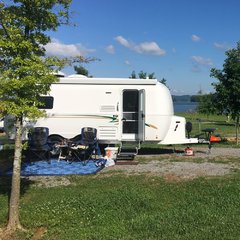
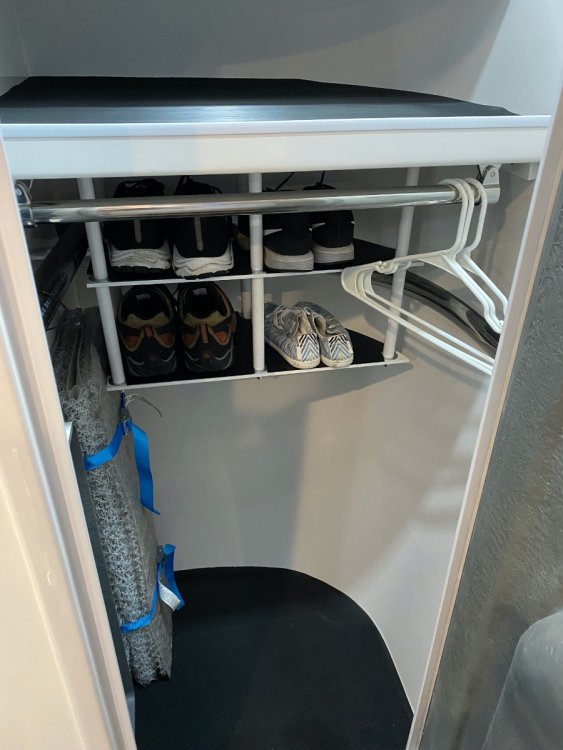


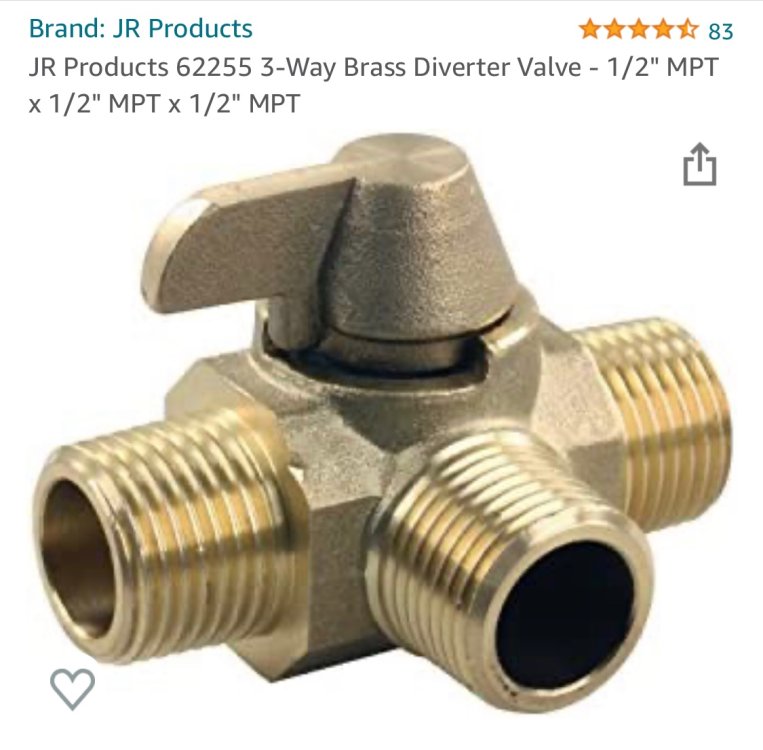

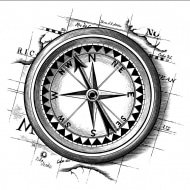
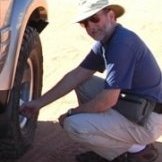


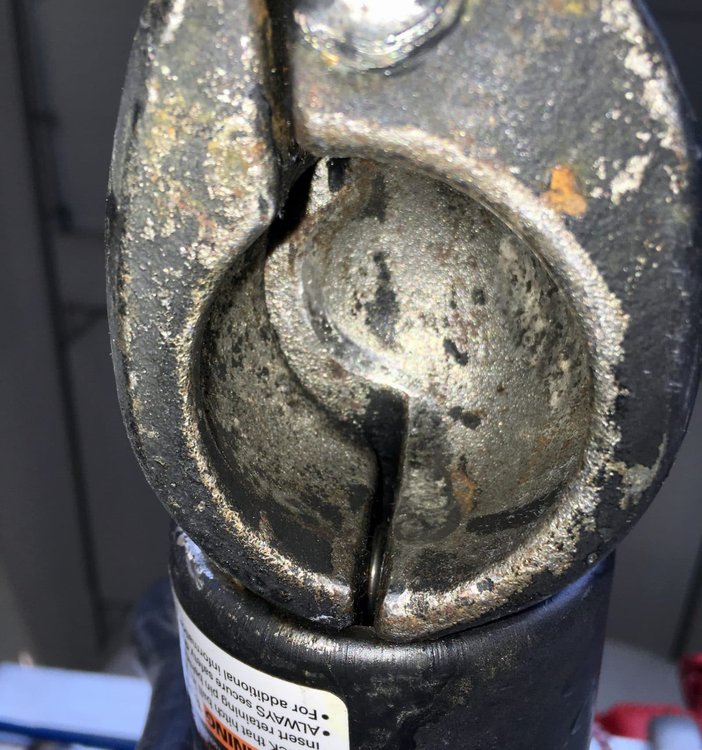


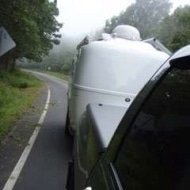

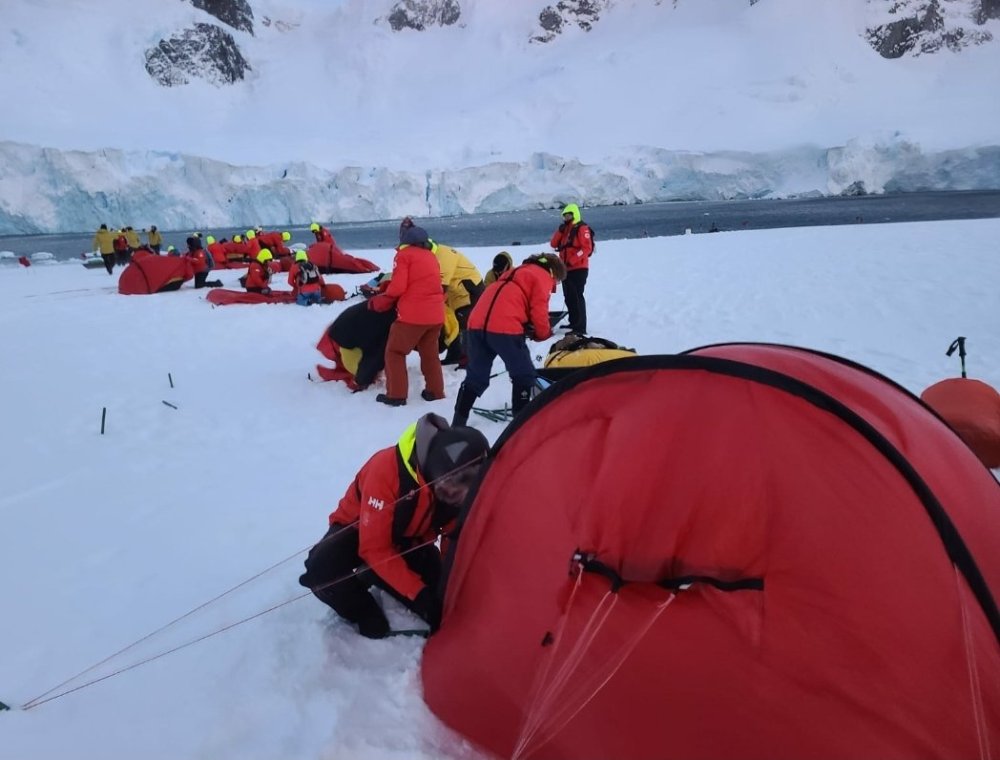
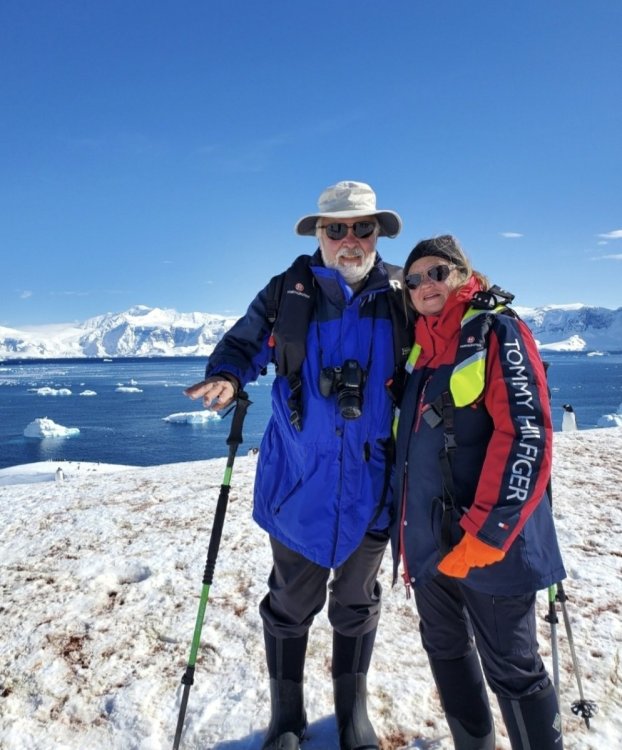


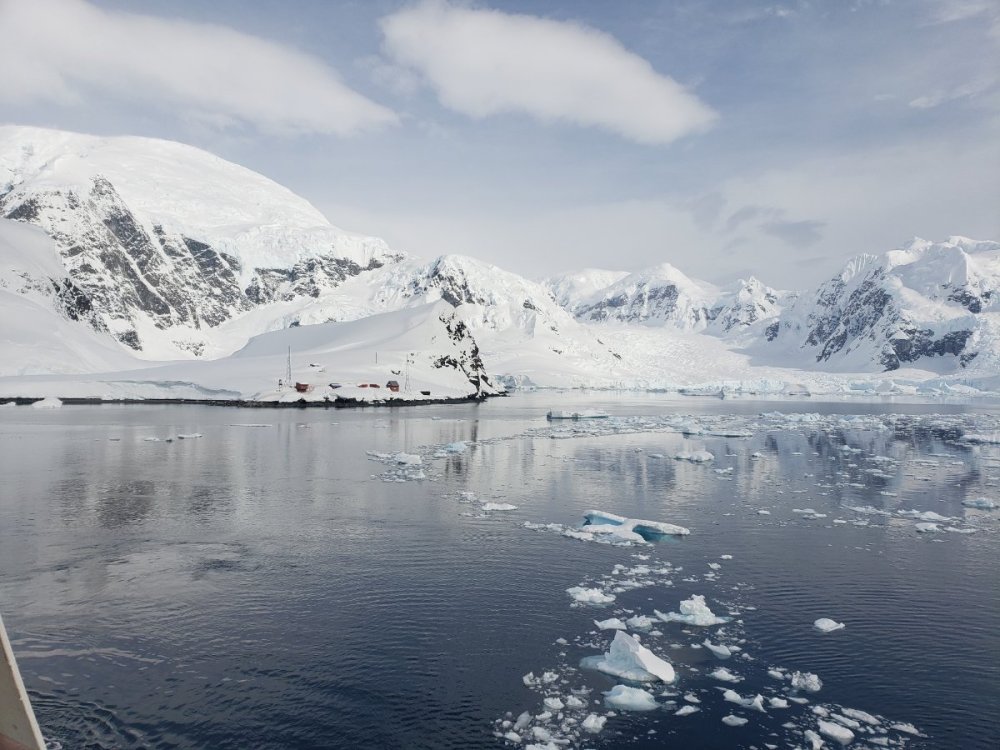
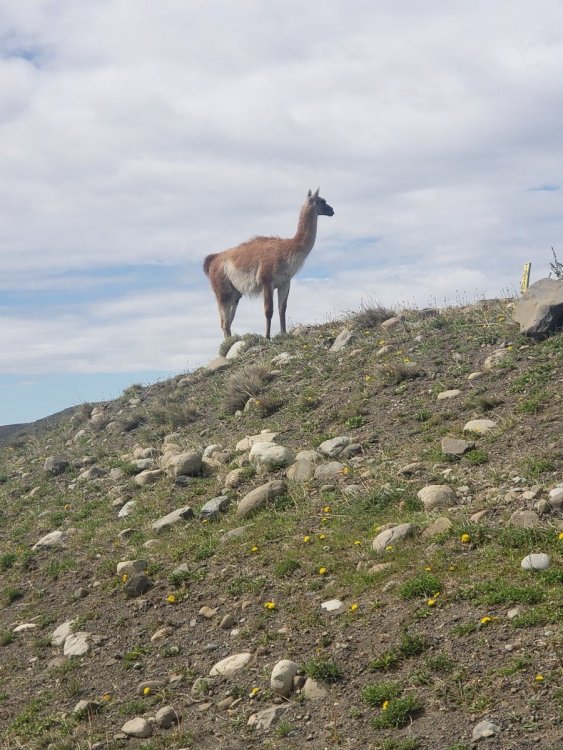




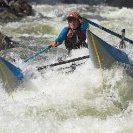



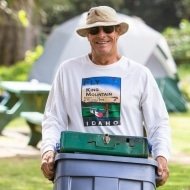






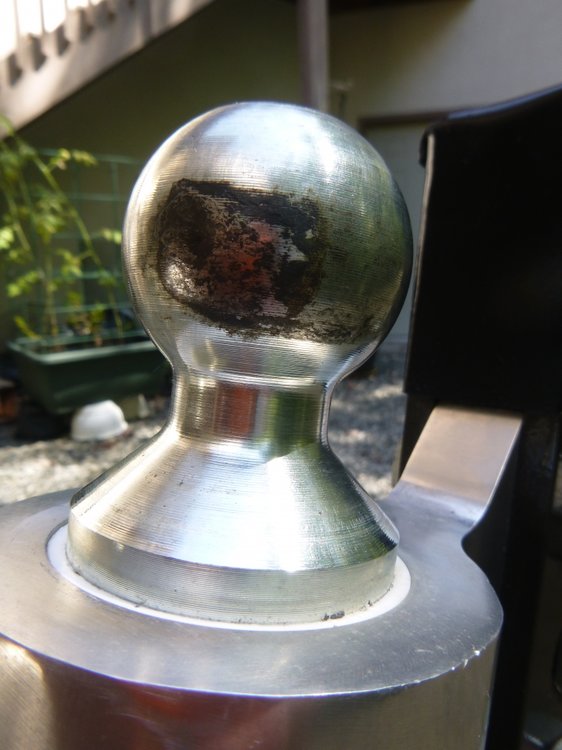

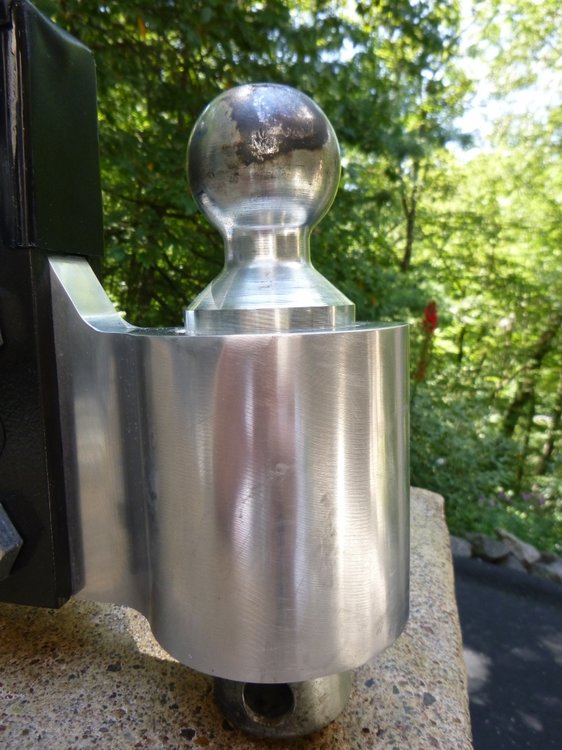

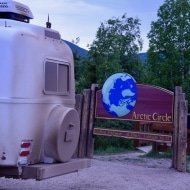
.thumb.png.eff4d7fbcbf1eb34d62e5c88cf70a0ee.png)
